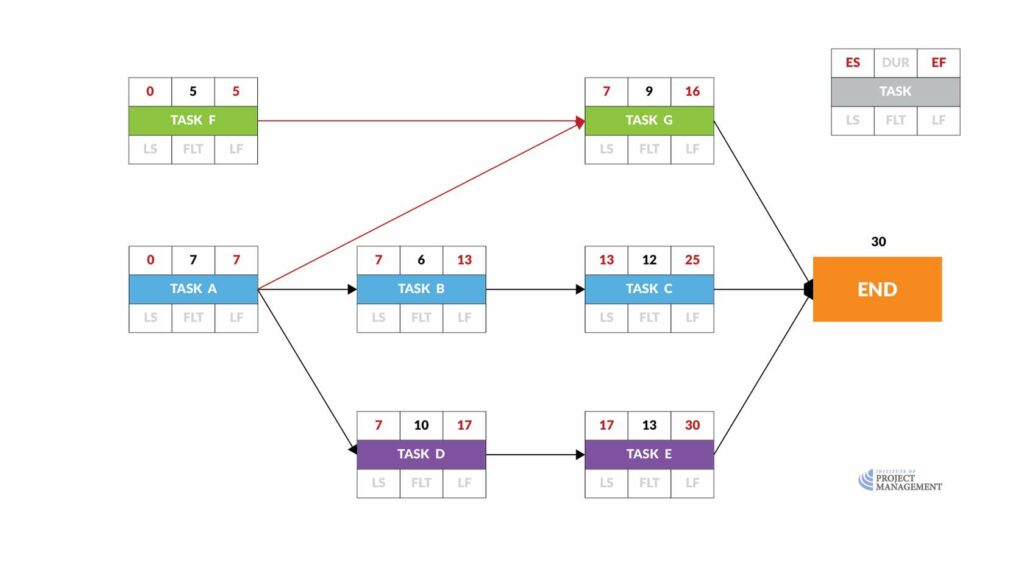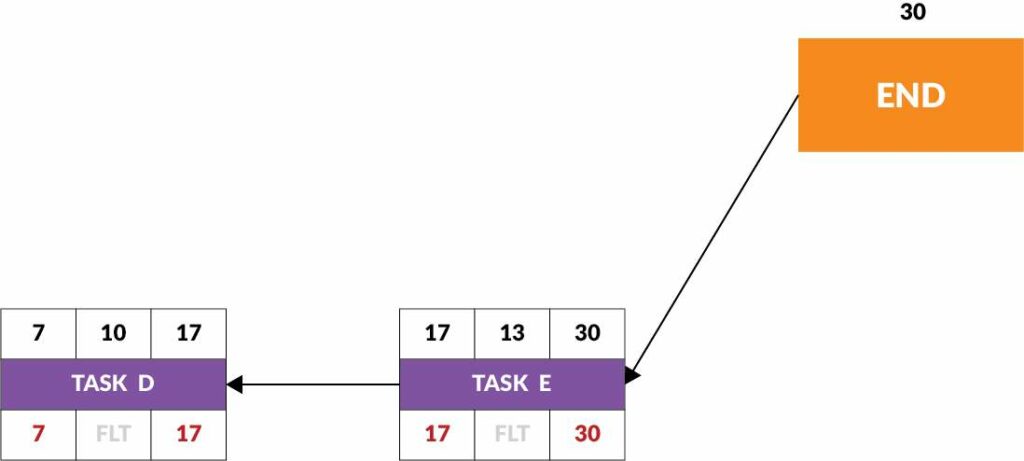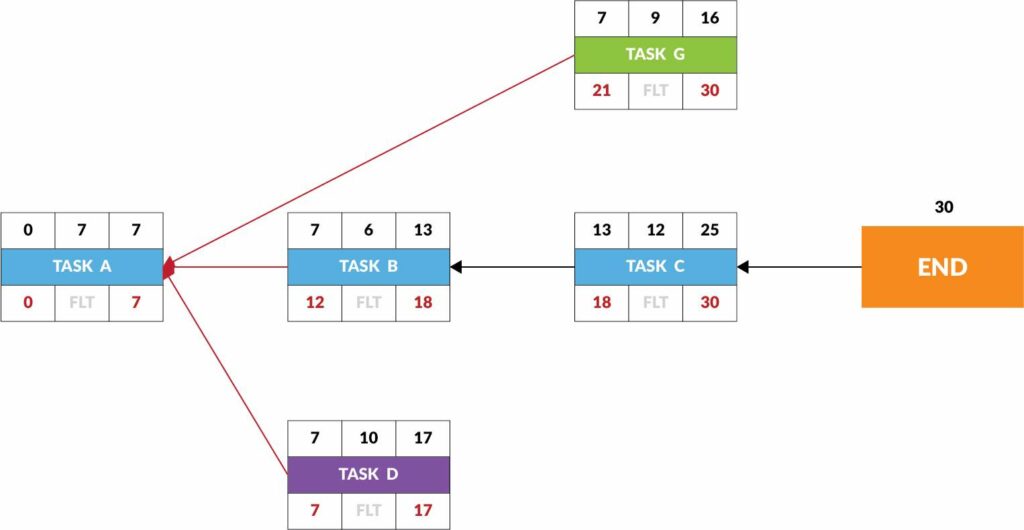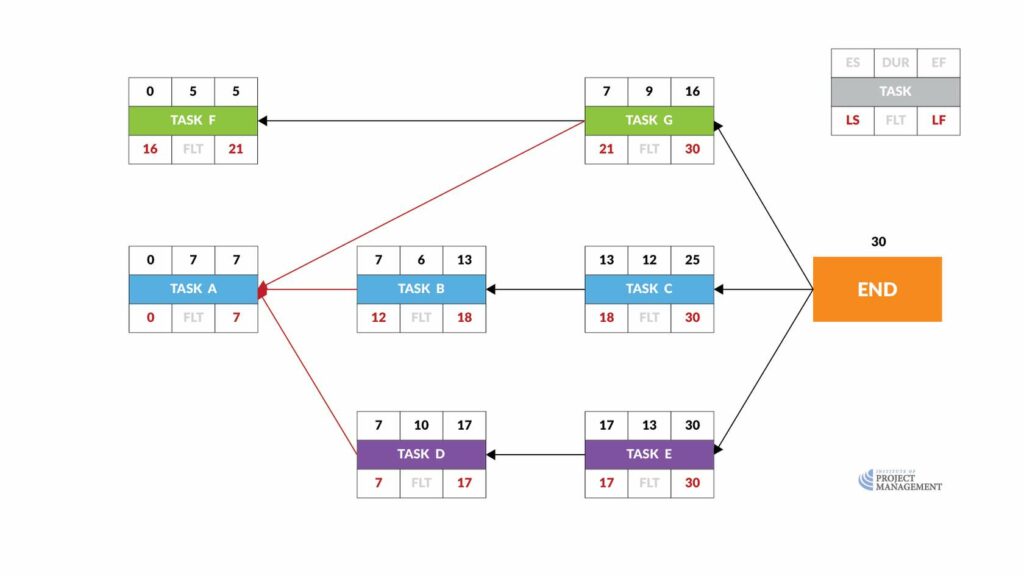6.3 Backward pass
Late start and finish
We can infer from the previous example that the earliest this project can finish is Day 30.
This is because, of the three ‘final’ tasks in the network, the latest early finish can be found at Task E.

This now becomes the starting point for our backward pass.
A backward pass follows the same process as the forward pass, only in reverse.
Starting with the scheduled end date of the project, we work backward to determine the latest we can possibly finish and therefore start each activity.
If we timed it so that Task G finished on the very last day of the project – Day 30 – then the latest we could start it would be Day 21.
The latest a task can start is calculated by subtracting the activity duration from the late finish date: LF – DUR = LS

Similarly, if the latest we could finish Task E is Day 30, then the latest we could start it is Day 17.
Following the same process, the late finish and start dates for Task D would be Days 17 and 7.

Finally, let’s work back through the blue tasks.
Task C’s late start and finish dates would be Days 30 and 18; Task B would be 18 and 12 – but stop!
Task A has three dependent (or successor) activities – Tasks G, B, and D.
Looking at the late start dates for each of these, what do you think the latest finish date for Task A might be?
Well, the latest we can start Task G is Day 21, and the latest we can start Task B is Day 12.
This means if we started Task G on Day 12, it would not be the end of the world, as our network diagram suggests we can still start as late as Day 21.
But the latest we can start Task D is Day 7.
If we started Task D on Day 12, that would not give us enough time to finish D and E, meaning we would not meet our schedule target of 30 days.

Do you see?
If Task D started on Day 12, and it took 10 days to finish it, we could not start Task E until Day 22, which would mean finishing the project by Day 35.
That’s not good.
Therefore the latest we can finish Task A is Day 7, which means the latest we can start it also happens to be the earliest we can start it, which is Day Zero.
It looks apparent then that getting Task A started and finished on time is critical to our project’s success!

When a task has multiple successors, the latest it can finish will be the earliest of the late start dates that follow.
